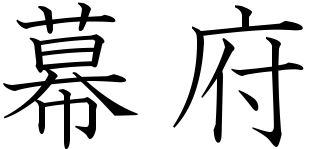Shogun: Warlord Rulers of Japan
Shogun ruled Japan for nearly 700 years. Powerful soldiers, they boasted a ceremonial appointment from Japan’s emperor, but Shogun were the effective rulers of the country from the 12th Century to the late 19th Century.
The first famous Shogun was Minamoto Yoritomo, whom the emperor recognized in 1192. Military leaders had risen in power and influence by this time, and Minamoto was, in effect, the ruler of the country, having triumphed in the Genpei War against the powerful Taira clan. The tradition of hereditary succession was strong in Japan, and the series of Shogun made up of fathers and sons was called a shogunate. The Japanese word was bakufu, which translates into English as the equivalent of “tent government.” The idea of the tent was a nod to the military nature of the position; some historians also think that the use of the word tent, and not castle or fortress, was meant to suggest that the position was meant to be temporary. (After all, a determined defense force would, if successful, have repealed an invasion and so the need for a commander of forces to fight an invasion would have disappeared.) 
The original Sei-i-Taishogun operated in a temporary fashion; the shogun, however, were around for much more than temporary rule.
A shogunate was only as strong as its military might and its reputation. Even though it was successful in repelling the Mongol invasions of 1274 and 1281, the Kamakura shogunate collapsed in 1333, and the more powerful Ashikaga Takauji became Shogun. His rule was termed the Ashikaga shogunate, and he and his successors had a firm grip on power for more than two centuries. The Kamakura shogunate had begun the practice of appointing military governors, or shugo, to head up the armed forces in the various provinces. These shugo gained in power and prestige through the years and eventually became the extremely powerful and influential daimyo, who had enough sway to bring about the collapse of the Ashikaga shogunate in 1573. At the head of the military hierarchy were the shugo; their most powerful warriors were the samurai, fierce fighters who lived and fought by a specific code of conduct, in battle and in the rest of their lives. When the Shogun was in complete control, samurai outranked even the daimyo. After a few decades of internecine warfare, a new strongman gained control. This was Tokugawa Ieyasu, whom many historians terms the most famous Shogun of them all. Tokugawa Ieyasu brought the daimyo under his control and ruled Japan with an iron fist, as did several of his successors in what has been called both the Tokugawa shogunate (after its founder) and the Edo shogunate (after its capital). Tokugawa’s successors ruled Japan until 1868, when the emperor regained overall supremacy, in the Meiji Restoration. |
|



 The idea of a shogun grew out of the need for a coordinator of Japan’s defense against an outside invasion. The first military commander named Sei-i Taishogun (or commander in chief of the expeditionary force against the barbarians) was Otomo no Otomaro. During the next few hundred years (from the 8th Century to nearly the 12th Century), in Japan called the Heian period, the country had several such leaders; the title was eventually shortened to Shogun.
The idea of a shogun grew out of the need for a coordinator of Japan’s defense against an outside invasion. The first military commander named Sei-i Taishogun (or commander in chief of the expeditionary force against the barbarians) was Otomo no Otomaro. During the next few hundred years (from the 8th Century to nearly the 12th Century), in Japan called the Heian period, the country had several such leaders; the title was eventually shortened to Shogun. Yoritomo established
Yoritomo established 
